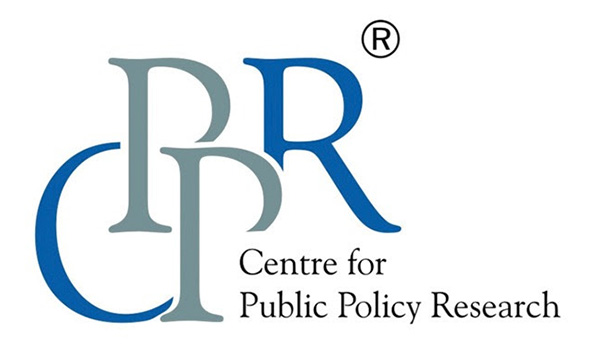Articles

Make Shared Mobility part of Sustainability Discussions
November 11, 2024
India and the 16th BRICS Summit: Interests and Agendas
November 26, 2024Landslide Risk Reduction in Kerala: A Climate Adaptation Policy Approach

The recent landslide in Wayanad has sparked a renewed discussion on the necessity of a robust climate policy in Kerala.
The ecological vulnerability of Western Ghats compounded by the escalating climate crisis is alarming. Between 1950 and 2018, human activities like mining and illegal encroachments have caused a 62% loss of Wayanad’s forest area. As a result, implementing a climate adaptation policy against landslides in Kerala is now a critical priority. The development of advanced scientific models and the execution of sustainable land use practices are crucial steps in achieving this objective. Past events underscore the gravity of this issue and warrant the need to devise effective mitigation strategies.
Environmental and Geological Factors
Studies (Feby et al. 2020) show that 96% of previous landslides in Kerala occurred in the Charnockite group of rocks. The geological oddity of Charnockite rock is that it loses its shear strength when exposed to water which might lead to landslides. Vellarimala and its surrounding forest areas are made of the Charnockite group of rocks which exacerbated the disaster’s intensity along with heavy rainfall.
Moreover, during periods of heavy rainfall, the rapid infiltration causes groundwater levels to rise and reduces the shear strength of the earth materials, leading to increased landslide susceptibility. The chemical weathering of rocks and the disruption of drainage networks on the slope are the prime environmental reasons for landslides.
The MoSSaiC Approach
The Management of Slope Stability in Communities (MoSSaiC) approach in St.Lucia Island was renowned for its landslide risk reduction. It was an empirical study where the local people and respective governments worked together to map slope differences and track down the contributing elements of landslides. They developed drainage systems to manage water flux, and the local community carried out the entire construction work.
A similar approach could be adopted in Kerala:
- Initiate landslide susceptibility mapping with community involvement.
- Develop drainage facilities in landslide-prone areas.
- Formulate a comprehensive susceptibility map, considering factors like rainfall, slope, rock and soil content, drainage, and groundwater levels.
In addition to landslide susceptibility mapping, detailed site-specific zoning must be carried out. Site-specific zoning helps identify areas at risk and allows for targeted mitigation. The variability in risk factors such as population density, houses, livestock presences, and road infrastructure, necessitates a localised approach. This method allows for dividing landslide-prone areas into distinct zones based on their exposure to risk and helps ensure targeted mitigation strategies.
Limitations
However, there are certain limitations pertinent to this intent. The Indian Meteorological Department has only 68 operational weather stations in Kerala. But, in compliance with BIS standards, Kerala requires 256 outposts. Therefore adequate weather stations with advanced equipment for slope and underground water measurements and assessing lithological units are indispensable in studying region-to-region rainfall patterns and vulnerability status.
In this way, the Disaster Management Authority in collaboration with each district administration can conduct landslide susceptibility mapping and environmental assessment at regular intervals. Periodic inspections by authorities in these areas will be effective in evaluating changes in protected areas, mapping illegal quarries/mines/resorts, and taking proactive measures against unprecedented climate changes and landslides.
Recommendations
The National Disaster Management Authority (NDMA) has recommended establishing a Centre for Landslide Research Studies and Management. Kerala has the Institute for Climate Change Studies (ICCS) under the Department of Science and Technology. The creation of a landslide research study department under this autonomous body will be helpful in developing a seasonal landslide inventory database that provides detailed information on the timing, location, causes, and characteristics of landslides which helps in carrying out studies on landslides due to climate change.
Secure residence is a fundamental right and every individual has an inherent right to a safe and stable place to live. An increased population pressure coupled with the shortage of land necessitates the state to think ahead and formulate a sustainable housing plan alongside an efficacious climate policy.
We are faced with a binary choice. One solution is relocating people from highly fragile areas after in-depth studies under the guidance of expert groups. The other option would be for the government to develop a climate-adaptive housing plan incorporating indigenous knowledge for these zones. Local communities can be taught to apply techniques like soil nailing, use materials like geosynthetics or geo-grids for slope stabilisation, and construct proper drainage systems in highly fragile areas to prevent landslide risks.
Tourism
Our policy framework should harmonise climate adaptation with economic development goals. Kerala’s economy derives significant benefits from tourism. Abandoned cities like Craco in Italy and Plymouth in Montserrat are deserted and no longer inhabited by people due to natural disasters. However, these locations have been repurposed for eco-friendly tourism, research studies and urban exploration.
Similarly, the relocated or landslide-affected areas in Kerala can be converted into Abandoned/Ghosted Cities promoting eco-friendly tourism initiatives and research studies on landslide causes. By converting landslide-affected areas into hubs of eco-tourism and research, Kerala can simultaneously protect its natural resources and benefit from sustainable development.
Henceforth, the current scenario in Kerala necessitates a well-coordinated and immediate action plan to tackle climate-induced disasters.
Afiya Biju, is a Research Assistant at Centre for Public Policy Research (CPPR)
Views expressed by the author are personal and need not reflect or represent the views of the Centre for Public Policy Research.

Afiya Biju completed her Bachelor's in Political Science from St Peter's College, Kolenchery, Mahatma Gandhi University, and her Master's in Political Science from University of Kerala (Kariavattom Campus). Her areas of interest include climate and environmental studies, post-Marxist theories, education, and subaltern studies.

